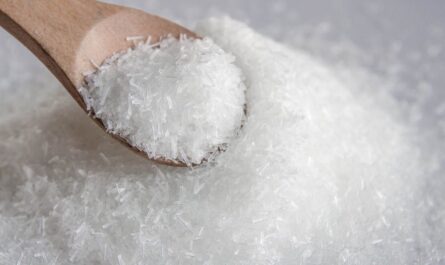From Kitchen Staple to Global Icon: The Mayonnaise Market Journey
Origin of Mayonnaise
Mayonnaise originated in Mahon, Spain in 1756. The sauce is named after the Spanish city of Mahon on the Balearic island of Menorca. It is said that the French Occitan mayonèse is derived from Mahon. During the 18th century, the French conquered the island and brought the local sauce back to France. By the late 19th century, mayonnaise had become a staple in French cuisine and was used as a sauce for meat, fish, and salad. It eventually spread throughout Europe and other Western countries. In this article we’ll explore about the global mayonnaise market outlook and its key ingredients of mayonnaise.
Key Ingredients of Mayonnaise
Mayonnaise is an oil-in-water emulsion made with egg yolks as the emulsifier. The three main ingredients that give mayonnaise its characteristic rich and creamy texture are:
– Oil: The oil used is typically a neutral-flavored oil like vegetable, canola, or olive oil. Oil makes up the largest volume proportion at around 60-70% of mayonnaise.
– Egg yolks: Raw egg yolks act as an emulsifier to thicken and bind the oil and water together. They provide richness, color, and flavor.
– Vinegar or lemon juice: A small amount (around 4-8%) of acids like white vinegar or lemon juice is used to balance the flavor and help stabilize the emulsion so it does not separate.
Other common minor ingredients include salt, pepper, mustard, sugar and herbs or spices. The perfect emulsion occurs when all ingredients are slowly incorporated while whisking vigorously.
Types of Mayonnaise
Over the years, many regional and international variations have evolved beyond the classic French mayonnaise. Here are some popular types:
– American Mayonnaise: Tend to contain sugar and be sweeter than French or European style. Hellmann’s and Best Foods are top American brands.
– Japanese Mayonnaise: Characteristically creamy white color and milder flavor due to lower acidity. Kewpie is the most famous brand overseas.
– Rouille: A French aioli-style mayonnaise thickened with red peppers. Served alongside fish soups in Provence.
– Spicy Mayonnaise: Horseradish, sriracha or other hot sauces are mixed in. Commonly served with sandwiches, fries or tacos.
– Vegan Mayonnaise: Made without eggs, using ingredients like aquafaba (chickpea liquid), tofu, silken tofu or cashews as the emulsifier.
– Homemade Mayonnaise: Can be flavored limitlessly but requires more effort to emulsify without extra stabilizers. Tastes fresher but does not last as long.
Nutritional Benefits and Concerns
As primarily an oil and fat-based condiment, mayonnaise is high in calories and very concentrated source of fat. However, it also provides certain nutrients when consumed in moderation:
– High in monounsaturated and polyunsaturated fats like oleic acid from olive oil and omega-3s from canola oil. These are heart-healthy fats.
– Rich source of vitamins A, D, E, K from egg yolks and oils. Egg yolks also supply some B vitamins and minerals.
– Versatile carrier of flavors and complements many foods well in small quantities like sandwiches, burgers, wraps and salad dressings.
On the downside, mayonnaise is very high in calories – a single tablespoon provides over 100 calories. Excess consumption could lead to weight gain if not accounted for. It also contains a lot of sodium from salt added. For healthiest options, choose mayonnaise made with olive or canola oil, or homemade when possible.
Emerging Trends in Mayonnaise Consumption
Originally enjoying popularity mostly in Western cuisines, consumption of mayonnaise has expanded worldwide in step with globalization. Some noticeable current and future trends include:
– Growth of ethnic fusion cuisines incorporating unique spice blends in mayonnaise are trending. For example, sriracha mayo has gained traction.
– Low-fat, low-calorie and vegan alternatives using novel replacements for eggs or oils cater to health and wellness focus.
– Asians are developing a bigger appetite for western dressings leading to wider availability of bigger jars. Japanese mayo remains the most popular abroad.
– Clean labeled products made only from whole food ingredients and without excess preservatives are gaining favor over heavily processed brands.
– Technology improves emulsification techniques for better stability and texture of homemade mayonnaise varieties. Electric hand mixers make it faster.
In conclusion, mayonnaise market has come a long way since its invention to gain universal appeal as a versatile and favorite condiment among many global cuisines. Although high in fat and calories, it delivers nutrition in moderation and ample room for creative flavors. The commercial mayonnaise market will keep innovating to suit changing preferences.




